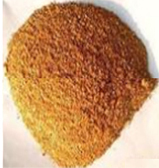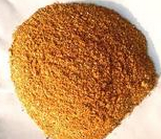The term "citric acid slag" is well-known to many people. Whether in industrial applications or in animal farming, it's widely recognized that industrial citric acid slag is a by-product of the food chemical industry, specifically when lime is used in the production of citric acid. The quantity of this material is usually consistent. It can be used as a cement retarder instead of gypsum, but the citrate residue commonly used in animal farming is not the same substance. What are its uses? How is it produced? I'm sure you're curious, so let me take you on a journey to discover more!
In the feed industry, citric acid slag typically refers to corn citrate residue and cassava citrate residue.
First, Corn Citrate Residue
Corn citrate residue is a by-product from the fermentation of corn using enzyme fermentation technology. After separation and extraction, the fermentation broth is dried using an advanced airflow drying process. This product is rich in lutein, has a yellow color, and can be used as a natural colorant in feed. It also has a strong aroma, excellent palatability, and is easy to digest. In addition to being high in protein and energy, it serves as a great alternative to corn and bran in animal feed, helping to reduce feed costs significantly.

Second, Cassava Citrate Residue
Cassava citrate residue is produced by fermenting starch from cassava (which mainly contains cellulose and starch) using Baiyibao EM stock solution. When combined with the right amount of protein feed and trace elements, it can help lower feed costs and improve economic efficiency.

The production process involves dissolving 0.5kg of brown sugar in 70°C hot water, then adding an appropriate amount of clean cold water to adjust the temperature to around 30°C. Next, add 0.5kg of Baiyi Bao EM stock solution, stir, and let it sit for 3 hours. Then dilute the mixture with clean water at 30°C to make a total of 17–20kg of bacterial liquid. Mix this diluted solution into 100kg of cassava residue, place it in a tank or container, cover the top with plastic film, and add a layer of cloth bag on top to protect the film. Secure it tightly with a rope. Ferment for 3–5 days in summer and 10–15 days in winter. Once the cassava citrate residue develops a sweet, mellow aroma, it's ready for use in animal feed.
Cassava citrate residue is rich in various digestive enzymes, vitamins, and amino acids, which enhance feed utilization, prevent bacterial diarrhea in piglets, and reduce fecal odor. By understanding the nature and uses of citric acid slag, we can better appreciate its role in both industrial and agricultural sectors. I hope this information helps clarify any confusion you may have had about the term "citric acid residue." Now you know what it really means!
Rectangle Chafing Dish,Rectangle Chafing Dishes,Rectangle Chafing Dish With Spring Legs,Mobile Table Ware
Shaoxing Biaoyi Hardware Products Co., Ltd. , https://www.byeob.com
